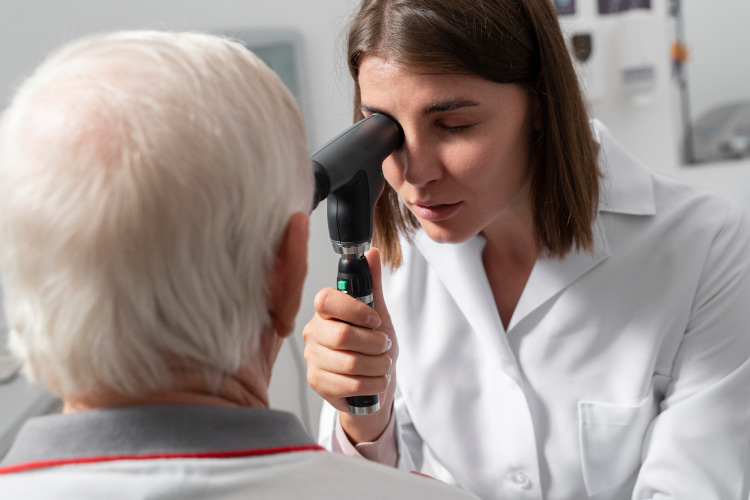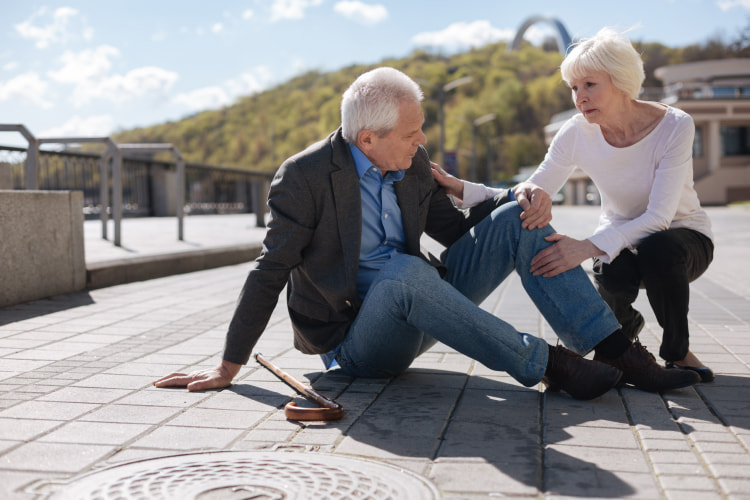As we age, one of the primary concerns for our elderly loved ones is their safety and well-being. One critical aspect of this is the need to prevent falls in the elderly. Falls can lead to serious injuries, impacting their quality of life. In this comprehensive guide, we will share the top tips to help you create a safer environment for your senior family members. These practical strategies are designed to minimize the risk of slips and promote their independence.
From making simple modifications to their living spaces to encouraging regular exercise. This article will equip you with the knowledge and tools you need. By following these tips, you can significantly reduce the chances of these issues in elderly individuals. You’ll be able to guarantee that they lead a healthy and fulfilling life. Let’s explore these measures that prioritize their safety as they age gracefully.
Understanding the Risks
Safe mobility promotion is a vital aspect of confirming wellness in old age. To effectively prevent falls in elderly individuals, it’s necessary first to grasp the underlying risks. Falls are not merely accidents. They are often the result of a complex interplay of factors.
One of the primary risk factors is age-related physical changes. As we grow older, our muscles weaken, bones become more brittle, and balance can deteriorate. Chronic health conditions can also exacerbate the risk of falls. These include arthritis, vision problems, or neurological disorders.
Environmental hazards are another key contributor. Slippery floors, poorly lit areas, and cluttered walkways can create a hazardous setting for seniors. For fall prevention, it’s necessary to recognize and address these environmental risks.
Moreover, the psychological aspect cannot be overlooked. The fear of accidents can lead to a vicious cycle, increasing the danger. People may limit their activities, leading to reduced mobility and muscle strength.

4 Essential Fall Prevention Tips
Welcome to our guide on Essential Fall Prevention Tips. We will navigate the journey of aging. One of our top priorities is protecting the physical and emotional welfare of our loved ones. Stumbles can pose substantial risks. They affect both soundness and overall quality of life. In this instruction, we will provide you with valuable insights and practical advice. You can incorporate them into your daily life.
Understanding the importance of fall prevention and following the strategies is necessary. That way, you can easily reduce the chance of accidents and injuries. It allows your loved ones to maintain their independence and peace of mind. They will empower you to create a secure environment for your aging family members. Let’s delve into these fundamental strategies.
Regular Exercise and Balance Training
When it comes to fall safety, a proactive approach can make a world of difference. One of the most practical strategies is through regular exercise and balance training.
Regular exercise is like a shield against misfortunes. It strengthens muscles. That makes them more resilient and capable of supporting the body’s weight. As we age, muscle mass naturally decreases. Some exercises target muscle groups, such as leg and core muscles.
Balance training is equally essential. It focuses on enhancing proprioception. It is the body’s awareness of its position in space. Practicing balance training can fine-tune this proprioceptive sense. Try standing on one foot or walking heel-to-toe. It lets to react more swiftly to balance disruptions.
Medication Management
Effective fall prevention tips often emphasize the importance of managing medications. It’s all about understanding the potential side effects and interactions that could increase the threat.
- Keep track of all prescribed and over-the-counter medications. Periodic reviews with healthcare professionals can help identify any unnecessary or potentially harmful drugs.
- Be aware of the potential side effects of each remedy. Some drugs can cause dizziness, drowsiness, or impair balance and coordination.
- Store them properly and organize them. It can prevent confusion and errors. Make sure to keep them in their original containers, clearly labeled, and out of reach of children.
- It’s vital to follow the prescribed dosage and timing as instructed by the healthcare provider.
Vision and Hearing Checks
When it comes to fall prevention in elderly individuals, regular vision and hearing checks are a must. Our senses of sight and hearing not only enrich our everyday lives. They also help maintain spatial awareness and balance.
Vision Checks
Vision changes are common with age. Issues like cataracts, glaucoma, and macular degeneration can compromise sight. These conditions may lead to misjudging distances or failing to see obstacles in one’s path. Vision checks can identify and address these issues. Usually, people utilize corrective lenses or surgical interventions.
Hearing Checks
Impaired hearing can impact communication and situational cognition. For instance, not hearing a warning or an approaching vehicle can result in accidents. Hearing checks can identify hearing loss and facilitate interventions like hearing aids. It enables people to stay alert and responsive to their surroundings.
Balanced Diet
A balanced diet is not only indispensable for overall health but also helps in fall prevention. Proper nutrition provides the body with the necessary nutrients to maintain muscle strength and bone density. Here are some dietary considerations:
- Calcium and Vitamin D. Adequate calcium intake supports bone density. Vitamin D supports the body’s absorption of calcium. Dairy products, leafy greens, and fortified foods are good sources of these nutrients.
- Protein. It is necessary for maintaining muscle strength. Include lean sources of protein like poultry, fish, beans, and nuts.
- Whole Grains. They provide fundamental fiber and energy. They help regulate blood sugar levels and provide sustained energy.
- Hydration. Staying hydrated can help prevent dizziness and weakness.
- Limit Sugar and Salt. Reducing the intake can prevent chronic conditions like diabetes and high blood pressure.
Fall Prevention at Home
Home is where we feel most comfortable and secure. It can also be a place where casualties happen. The good news is that with some simple steps, we can make our homes more unassailable. This guide is all about fall prevention at home. We will show you functional suggestions to keep you and your loved ones secure.
From improving lighting to using non-slip surfaces and assistive devices. We will explore the key strategies to make your house a secure haven. These steps are pretty easy to implement. They also significantly contribute to your protection and casualty deterrence. By following them, you can enjoy the peace and comfort of your residence with confidence.
Lighting Improvements
Good lighting can make a huge difference when it comes to fall safety. Confirm that hallways, staircases, and frequently used pathways are well-lit. Consider adding additional light sources or increasing the wattage of bulbs. Nightlights are particularly useful in areas where people may need to get up during the night. They provide enough illumination to move without the need for turning on brighter lights. Consider installing motion-activated lights in areas like closets or garages. They turn on automatically when someone enters the area. Keep an eye on light bulbs and replace them promptly when they burn out.
Using Non-slippery Surface
When it comes to fall prevention at home, one straightforward strategy is to make use of non-slip surfaces. Slippery floors can be a major hazard, especially those in high-risk areas like the bathroom or kitchen.
Use non-slip bath mats inside the tub or shower and place them on the bathroom floor. Kitchens often have smooth, hard flooring. Consider utilizing rugs or mats near the sink and food preparation areas. Stairs are high-risk areas as well. Install treads or apply adhesive strips to the steps.
Assistive Devices
Preventing falls in the elderly is a top priority for promoting security. To achieve this goal, think about applying assistive devices. These tools can supply support, stability, and enhanced mobility. Some common assistive devices are:
- Canes. They provide additional stability and support when walking. They can help distribute weight and avoid stumbling.
- Walkers. They offer substantial stability. They come in various styles, including standard walkers and rollators with wheels.
- Wheelchairs. For those with limited mobility, wheelchairs deliver a means of secure and comfortable movement.
- Grab Bars. Install them in the bathroom, near the toilet, and in the shower or bathtub.

Outdoor Falls Safety
Outdoor fall safety is integral as well. The great outdoors offers a wonderful opportunity for fresh air, exercise, and enjoyment. However, it also presents unique challenges. We will explore basic precautions to help you enjoy activities without the worry of tumbling. We will discuss the importance of proper footwear and the importance of staying hydrated. We will also talk about how to make the most of your time in the sun while avoiding threats. By following the guidance, you will be better prepared to savor the great outdoors while staying safe.
Importance of Safe Footwear
One of the integral fall prevention tips is often right at our feet: safe footwear. Shoes with non-slip soles provide better traction. They reduce the likelihood of slipping on wet or uneven surfaces. Proper footwear offers support for the feet, ankles, and arches. Shoes should fit comfortably without being too tight or too loose. An improper fit can lead to discomfort and instability. Shoes with a closed-toe design protect the toes and prevent stubbed toes or injury.
Proper Hydration
Staying well-hydrated is a must for maintaining strength, balance, and cognitive function. Dehydration can lead to muscle weakness and fatigue. That makes it more challenging to support the body and maintain balance. Proper hydration is necessary for maintaining clear thinking and decision-making. Cognitive impairments can increase the risk of falls. Also, it can cause a drop in blood pressure, leading to dizziness and fainting.
Conclusion
This guide has provided a wealth of knowledge and practical tips to help older adults and their caregivers reduce the risk of falls. From regular exercise and balanced nutrition to home safety modifications and assistive devices.
As we’ve learned, fall prevention is a shared responsibility. It demands our continued attention and dedication. We must remain vigilant and adapt to our environments. The journey towards aging gracefully involves embracing these recommendations as part of our routine.
We invite you to take immediate action in implementing this advice, not only for the seniors but for your own safety as well. Remember that your local healthcare providers and specialists, such as All Injury Rehab, can offer additional guidance and support in your efforts to prevent falls in the elderly. Together, we can make a meaningful difference.
FAQ
Why is fall prevention important for the elderly?
Fall prevention is crucial to avoid injuries, maintain independence, and ensure a high quality of life for elderly individuals.
How can caregivers help in preventing falls at home?
Caregivers can help by making environmental modifications, assisting with exercises, and managing medications to prevent falls in the elderly.
Can regular exercise help in fall prevention for the elderly?
Yes, regular exercise can improve strength, balance, and coordination, which are essential for preventing falls in elderly individuals.


Related posts
Today is an era dominated by digital conveniences and desk-bound occupations. So, the effects of a sedentary lifestyle have emerged as a pervasive concern.
Our guide aims to equip people with the knowledge to understand the intricacies of internal injuries. They are arising as a result of car accidents. Join us on this informative trip.
Beyond merely treating injuries, chiropractors work to enhance the body's biomechanics. It allows sportsmen to move more potently and reduces the risk of future injuries.